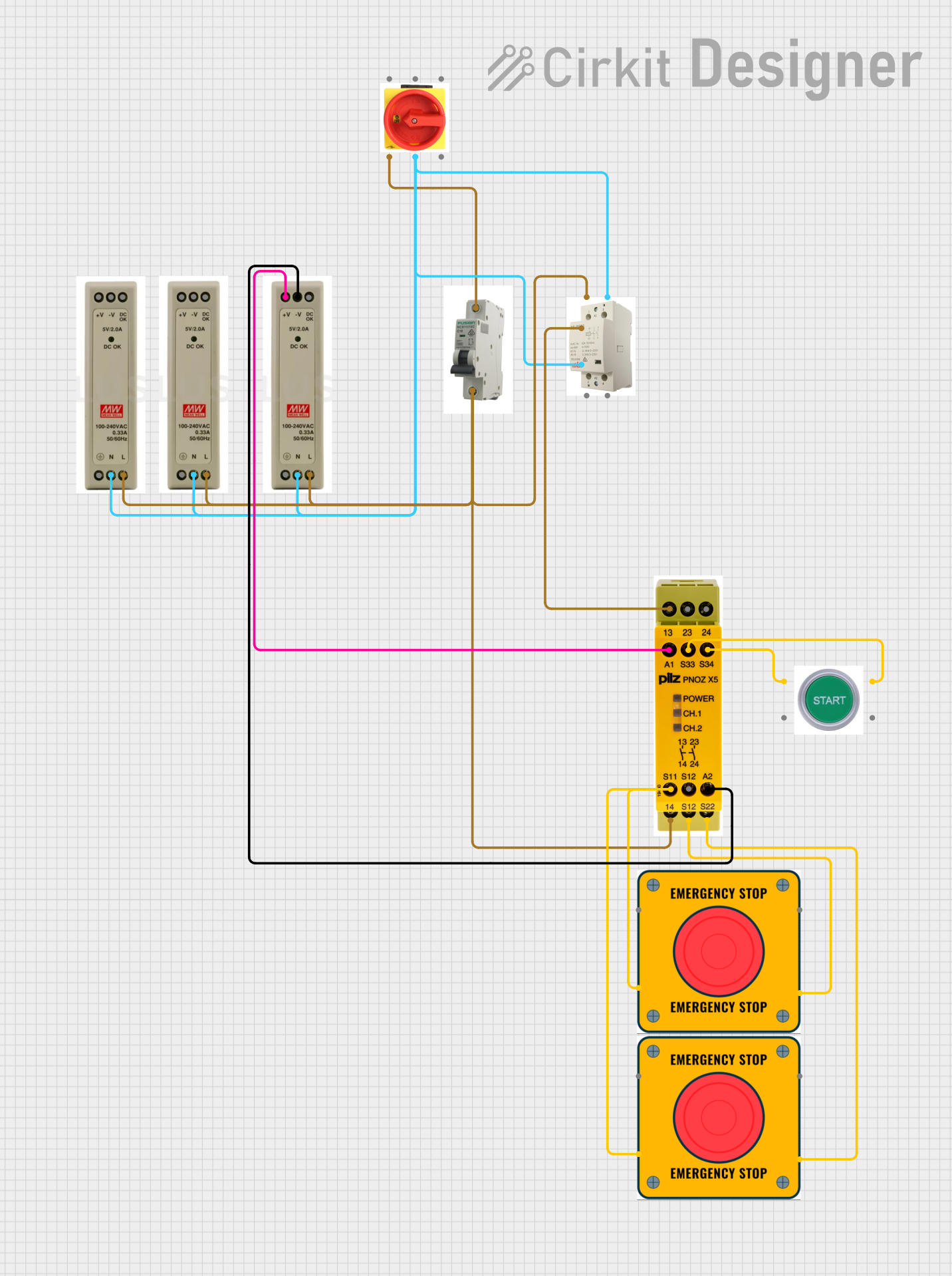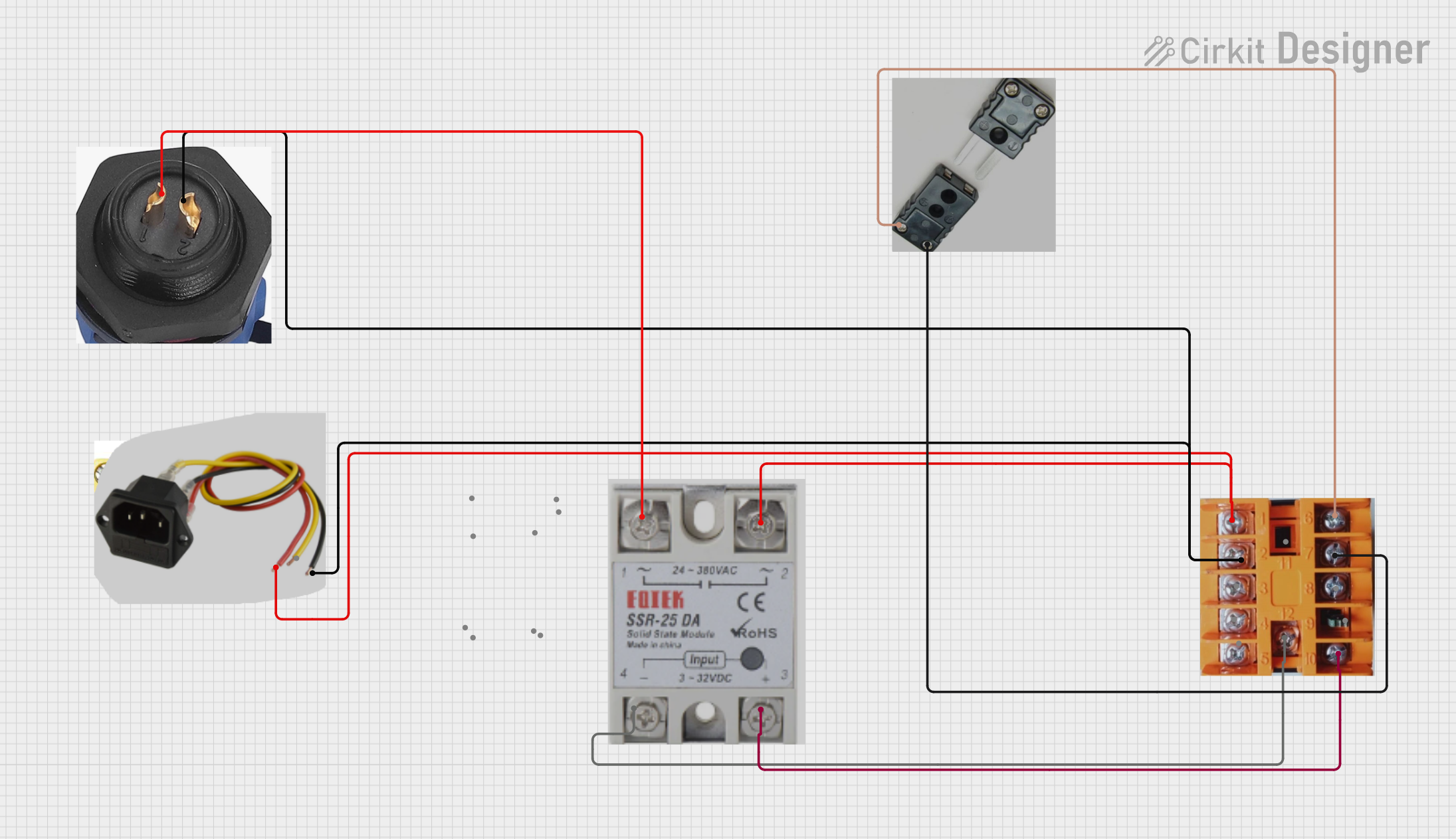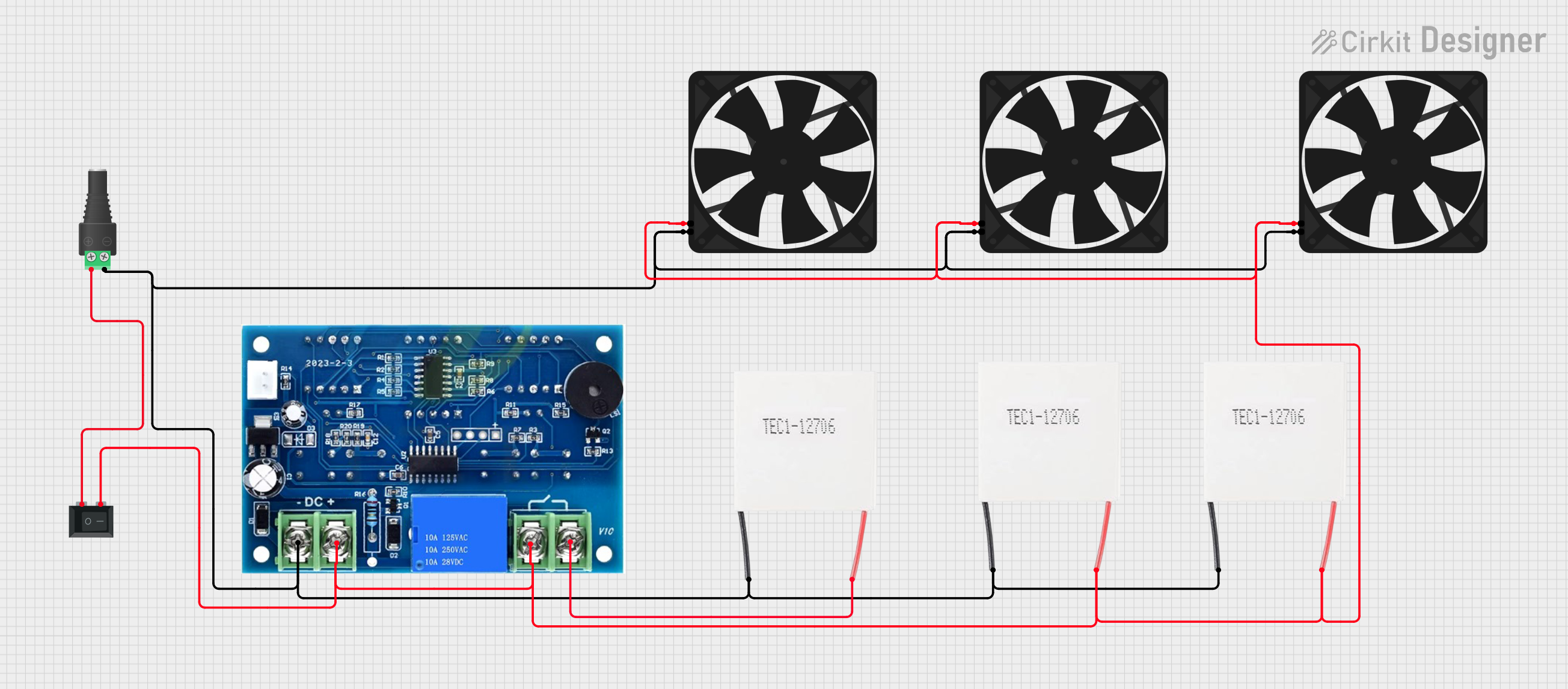
How to Use MAIN ISOLATOR (3P): Examples, Pinouts, and Specs

 Design with MAIN ISOLATOR (3P) in Cirkit Designer
Design with MAIN ISOLATOR (3P) in Cirkit DesignerIntroduction
A Main Isolator (3P), also known as a triple-pole isolator, is a critical safety device in electrical systems. It is designed to disconnect all three live conductors in a three-phase power supply simultaneously, ensuring complete isolation of electrical equipment from the main power source for maintenance or emergency purposes. This component is commonly used in industrial settings, commercial buildings, and high-power electrical installations.
Explore Projects Built with MAIN ISOLATOR (3P)

 Open Project in Cirkit Designer
Open Project in Cirkit Designer
 Open Project in Cirkit Designer
Open Project in Cirkit Designer
 Open Project in Cirkit Designer
Open Project in Cirkit Designer
 Open Project in Cirkit Designer
Open Project in Cirkit DesignerExplore Projects Built with MAIN ISOLATOR (3P)

 Open Project in Cirkit Designer
Open Project in Cirkit Designer
 Open Project in Cirkit Designer
Open Project in Cirkit Designer
 Open Project in Cirkit Designer
Open Project in Cirkit Designer
 Open Project in Cirkit Designer
Open Project in Cirkit DesignerCommon Applications and Use Cases
- Industrial machinery isolation
- Electrical panel safety switches
- Commercial building main power shutoff
- Emergency power cutoff systems
Technical Specifications
Key Technical Details
- Voltage Rating: Typically ranges from 240V to 600V AC
- Current Rating: Can vary from 16A to 125A or higher, depending on the model
- Power Ratings: Dependent on voltage and current ratings
- Isolation Capability: Designed to isolate all three phases
- Breaking Capacity: Suitable for high fault current interruption
- Operating Temperature: Varies with design, often -25°C to +40°C
Pin Configuration and Descriptions
| Pin Number | Description | Notes |
|---|---|---|
| L1 | Phase 1 Input | Connect to phase 1 of power |
| L2 | Phase 2 Input | Connect to phase 2 of power |
| L3 | Phase 3 Input | Connect to phase 3 of power |
| L1' | Phase 1 Output | Connect to phase 1 of load |
| L2' | Phase 2 Output | Connect to phase 2 of load |
| L3' | Phase 3 Output | Connect to phase 3 of load |
| Earth | Safety Ground | Connect to system ground |
Note: The actual pin configuration may vary depending on the manufacturer and model. Always refer to the manufacturer's datasheet for exact pinout information.
Usage Instructions
How to Use the Component in a Circuit
- Installation: The main isolator should be installed by a qualified electrician, following local electrical codes and standards.
- Wiring: Connect the incoming three-phase power supply lines to the L1, L2, and L3 pins. The outgoing lines to the load should be connected to the L1', L2', and L3' pins, respectively.
- Operation: To isolate the power, switch the main isolator to the 'OFF' position. This will disconnect the power supply from the load.
- Safety Checks: Before performing any maintenance, verify that the isolator is in the 'OFF' position and locked out/tagged out if necessary.
Important Considerations and Best Practices
- Always ensure the main isolator is rated for the voltage and current of the circuit it is being used in.
- Regularly inspect the isolator for any signs of damage or wear.
- Test the isolator's operation periodically to ensure it can disconnect power reliably.
- Never attempt to open the isolator under load unless it is specifically rated for such operation.
Troubleshooting and FAQs
Common Issues Users Might Face
- Isolator Does Not Disconnect: Check for mechanical failure or obstructions that prevent the switch from moving to the 'OFF' position.
- Arcing or Heating at Terminals: Ensure all connections are tight and that the isolator is not overloaded beyond its rated capacity.
Solutions and Tips for Troubleshooting
- If the isolator fails to operate, replace it immediately with one of the same or higher rating.
- For arcing or heating issues, turn off the power and tighten all connections. If the problem persists, consult an electrician.
FAQs
Q: Can a main isolator be used as a regular switch? A: No, a main isolator is not designed for frequent switching. It is intended for isolation purposes.
Q: Is it safe to touch the load side of the isolator when it is in the 'OFF' position? A: While the isolator disconnects the power, always follow proper lockout/tagout procedures and verify the absence of voltage before touching any electrical components.
Q: Can a main isolator be padlocked? A: Yes, most main isolators have provisions for padlocking in the 'OFF' position for safety during maintenance.
Note: This documentation is for informational purposes only. Always consult a professional for installation and servicing of electrical components.